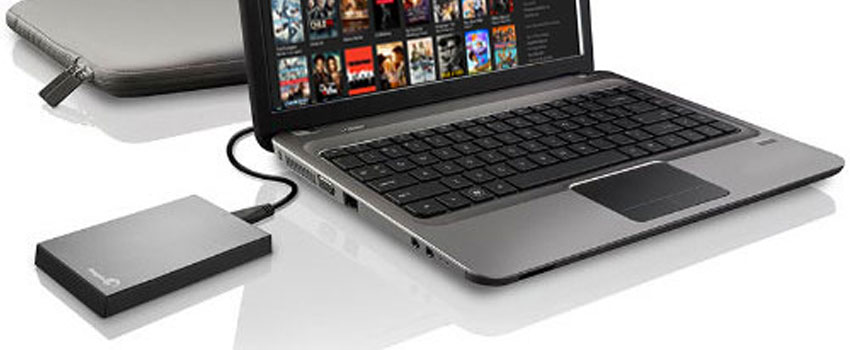With the advent of computer systems, data has always been a center of attention both from a utility as well as a protection point of view. Over the course of time and advancement in technology, backup systems start to become mainstream. Now, days are gone when backups could be made over floppy disks or even compact disks. Furthermore, the volume of today’s data could not approve the usage of such backup mechanisms, as it would require thousands of floppy disks, and hundreds of CDs to cater to today’s data needs. However, it is now possible to store TBs of data in just one pocket-size device called an external hard drive. It must be remembered that depending on the technology, there exist two types of external hard drives, i.e., solid state drive and hard disk drive. Due to their high volume of storage space and compact size, portable external hard drives are the most common and easiest way to store and backup data.
How many External Hard Drives are Sufficient?
Since the vitality of external SSD or HDD is very much relevant and applicable to the data backups, a very common question appears about the number of portable hard drives that a person should have in order to sustain the vitality of data backups. Well! In this regard, the classic rule says that the number of portable SSD or HDD depends on the volume of the data that is to be backed up along with the required data security. However, accumulating all the associated pros and cons of external hard drives, there should be at least one external hard drive in the minimum scenario. But in a much better case, there should be two external hard drives. Subsequently, the best case would be to have three external hard drives which should be rotated periodically on a per-day basis.
To understand it well, consider a situation where the first external hard drive is plugged in and the second one is at home or any other location. Whereas you are carrying a third external hard drive. Now on the second day, the first external hard drive will be with you and the second one will be plugged into the system. Whereas the third one will be at home. This way, the cycle continues. In this case, while periodic backups would be prepared on each external hard drive, one external hard drive will always be at some other location. So, in the worst case, data will always be saved and accessible. However, in any case, even data is lost, then still that loss won’t be more than one day old. This three external hard drive mechanism is considered as the best backup strategy in case of external hard drives.
Backup using Multiple Hard Drives
Though three external hard drives models seem very promising, but this model isn’t feasible for everyone. For example, there can be some users whose data requirements are so vast that they need to cascade multiple hard drives to manage their data backups. So, for them, it will become very complex to use three external hard drives models.
However, there is a need to give a generalized overview for both three external hard drives users and cascaded external hard drives users, using multiple portable hard drives for data backup purposes. In pursuit of this, the following is the four-step guide:
Step 1. The first step is known as the determination setup where you will determine which multiple hard drives mode would they be going with. Depending on the requirements and your preferences, it can either be a cascaded model where multiple external SSDs shall be cascaded to constitute a single hard drive. Remember that such a mechanism would result in RAID configuration. On the contrary, the second model will be to use three separate external hard drives, as discussed below. Now in this setup, if you are going with the former then depending on the hard drive model make sure that connection termination points, i.e., either USB 2.0 or a motherboard supported cable are working.
Step 2. The second step involves the hard drive installation. Again, depending on the manufacturing and cable termination of the hard drive, connect it with the computer and see if it’s working.
Step 3. The third step involves the configuration step where external hard drives will be configured to backup data as per your respective model. Now turn on the computer and on the start screen, it will be navigated that which key should be pressed (usually that’s the F4 key) to enter the RAID utility program. As soon as this key will be pressed, the configuration program appears on the screen. Here different configuration modes will be displayed, such as RAID 0 where all of the data shall split across all connected drives, thus treating them as one combined hard drive. Whereas in the RAID 1 mode, one hard drive will be a mirror of other drives and shall include the exact copy of the former. So, select RAID 0 if the cascaded model is desired. However, select RAID 1 if the three-external hard drive model is desired.
Step 4. The fourth step is a rather concluding step where the computer will reboot and the saved configuration shall come into action.
Conclusion
Backing up vulnerable data on an external hard drive or set of external hard drives is a great and easiest way to prevent any data loss situation. With the technological advancements, transfer rates as well as storage spaces, have improved drastically which resulted in more storage capacities in the minimum possible time. There are plenty of brands offering a wide range of external hard drives. Some of the prominent names in this regard include Seagate Backups, Western Digital or WD My Passport, Samsung T5, and Transcend. Based on your preference, both three-external-hard-drive and cascaded model has a lot to offer. From high data transfer rates to high capacity storage, important files and large files are backed up instantly.




